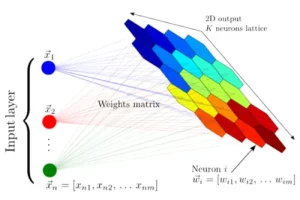Mohr’s circle for strain is a graphical representation of the state of strain at a point in a material. It is a powerful tool used in engineering and physics to visualize and analyze the transformation of strains as an element is rotated. Just like Mohr’s circle for stress, it provides a convenient way to determine maximum principal strains, minimum principal strains, and maximum shear strain. This graphical representation is particularly useful in understanding the behavior of materials under complex loading conditions.
How is Mohr’s circle used for Sstrain?
Drawing the Mohr’s circle for strain involves plotting the normal strains on the horizontal axis and the shear strains on the vertical axis. The center of the circle represents the average normal strain, and the radius represents the maximum shear strain. By rotating the stress element, we can determine the corresponding strains on any plane passing through that point.
Why should we use Mohr’s circle for strain?
- Visualization: Mohr’s circle provides a visual representation of the strain state, making it easier to understand complex stress conditions.
- Stress transformation: It allows for the determination of strains on any plane passing through a given point.
- Principal strains: The maximum and minimum principal strains can be easily identified on the circle.
- Maximum shear strain: The maximum shear strain can be determined, which is crucial for assessing the potential for failure in materials.
The coordinate system
The coordinate system used for Mohr’s circle for strain is similar to that of Mohr’s circle for stress. The horizontal axis represents the normal strain (ε), and the vertical axis represents the shear strain (γ/2). The sign convention for shear strain is important to ensure correct plotting.
Example of Mohr’s circle for strain
Consider a uniaxial tension test. The normal strain in the direction of the applied load is εx, and there is no shear strain. To draw the Mohr’s circle:
- Plot the point (εx, 0) on the ε-γ/2 plane.
- This point represents the state of strain on the x-y plane.
- Since there are no other stresses acting on the element, the Mohr’s circle will be a point at (εx, 0).
Applications of Mohr’s circle for strain
- Materials science: Used to analyze the deformation of materials under various loading conditions.
- Geotechnical engineering: Used to study the behavior of soils and rocks under stress.
- Structural engineering: Used to assess the strain state in structural members.
Limitations of Mohr’s circle for strain
While Mohr’s circle is a powerful tool, it has some limitations:
- Small strains: It is most accurate for small strains.
- Linear elasticity: It assumes linear elastic behavior of the material.
- Plane stress conditions: It is primarily used for plane stress conditions.
Mohr’s circle for strain is a valuable tool for engineers and scientists to visualize and analyze the state of strain at a point in a material. By understanding the principles of Mohr’s circle, engineers can make informed decisions about material selection and design.
Comparison between Mohr’s circle for stress and strain
While Mohr’s circles for stress and strain are similar in concept, there are key differences in their representation and interpretation:
- Variables: Mohr’s circle for stress uses normal stress (σ) and shear stress (τ) as coordinates. Mohr’s circle for strain uses normal strain (ε) and shear strain (γ/2) as coordinates.
- Center and Radius: The center of Mohr’s circle for stress represents the average normal stress, while the center of Mohr’s circle for strain represents the average normal strain. The radius of both circles represents the maximum shear stress or shear strain.
- Orientation: The orientation of the circle relative to the coordinate axes is different for stress and strain.
Mohr’s circle for anisotropic materials
For anisotropic materials, where the mechanical properties vary with direction, the Mohr’s circle is more complex. The circle is no longer centered at the origin and may be elliptical instead of circular. This is due to the coupling between normal and shear stresses or strains in anisotropic materials.
Applications of Mohr’s circle in finite element analysis
Finite element analysis (FEA) is a powerful numerical method used to solve engineering problems. Mohr’s circle can be used in FEA to:
- Visualize stress and strain distributions in complex structures.
- Determine critical locations where failure is most likely to occur.
- Evaluate the performance of materials under different loading conditions.
- Optimize designs to improve strength and efficiency.
The relationship between Mohr’s circle and strain tensors
The strain tensor is a mathematical representation of the state of strain at a point in a material. The principal strains and maximum shear strain can be obtained from the strain tensor. Mohr’s circle provides a graphical interpretation of the strain tensor, making it easier to visualize and understand the strain state.
Recommendations
- Practice: The best way to master Mohr’s circle is through practice. Solve numerous problems to gain proficiency.
- Software: Utilize engineering software to create Mohr’s circles and perform complex analyses.
- Consider 3D stress states: For more complex problems, consider using three-dimensional stress analysis techniques.
Discover more blog posts
Types of Reinforced Concrete






